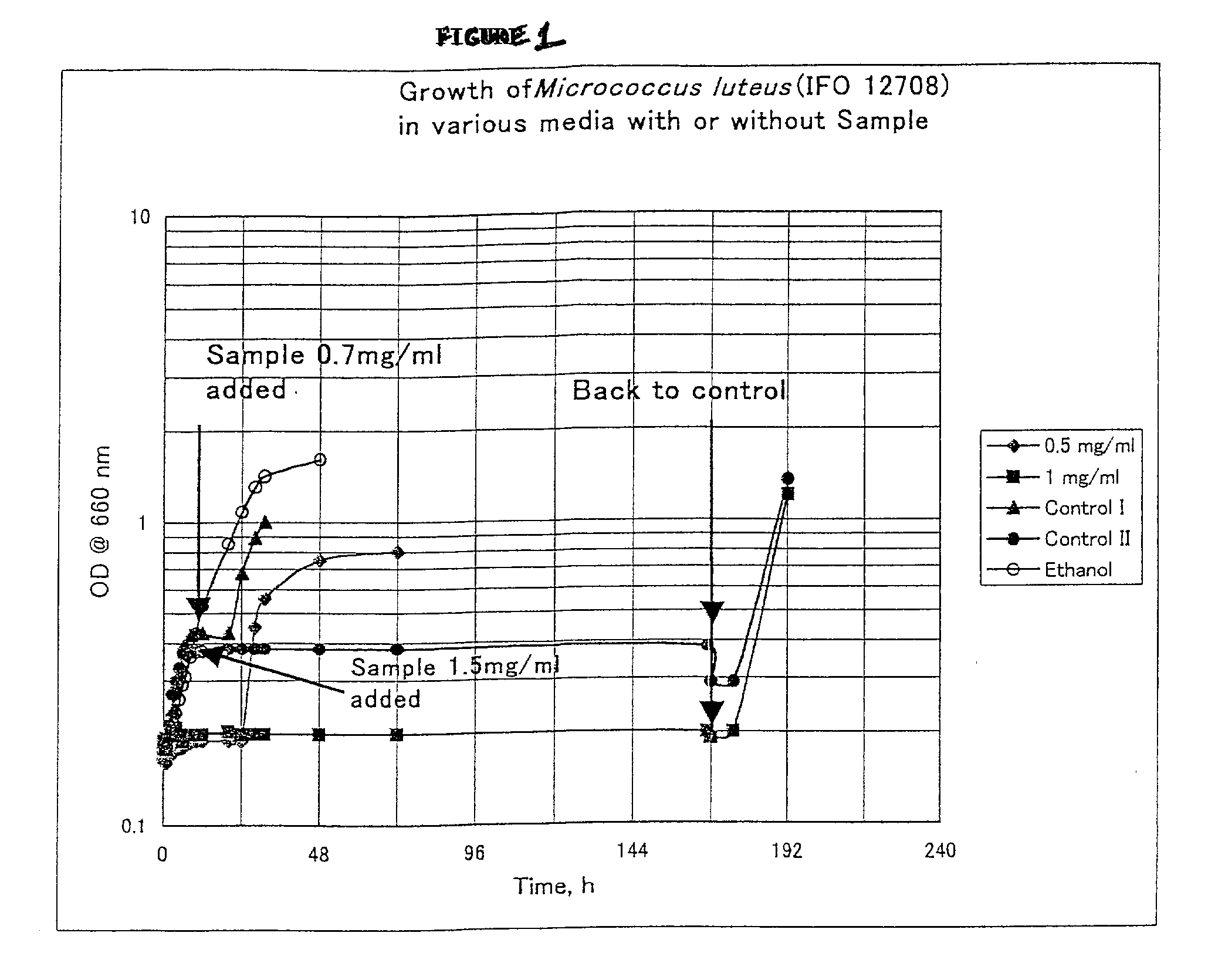Method of utilization of zygosaccharomyces rouxii
a technology of zygosaccharomyces rouxii and zygosaccharomyces rouxii, which is applied in the field of composition and utilization of zygosaccharomyces rouxii, can solve the problems of unsatisfactory side effects, high labor intensity, and common investment in cultivating plants, and achieve the effect of avoiding safety problems
- Summary
- Abstract
- Description
- Claims
- Application Information
AI Technical Summary
Benefits of technology
Problems solved by technology
Method used
Image
Examples
example 1
[0057] Vegetables, fruits, and herbs were washed and preserved with equal weight of sugar for one month and were pressed to get syrup. After inoculating with old stock starter or cultured inoculum of Z.rouxii, the syrup was fermented under controlled temperature for about two months with daily handling or aeration and occasional addition of more sugar. The fermented syrup was matured for about one month. The final pH of the product was about 4 with total soluble solid content of 55 to 60% and titratable acid content of 40 to 50 milligram equivalent per liter. Depending on the vegetables and fruits used, the flavor ranged from vegetable juice to fruit juice. With ripened product, it had a mellow honey flavor. The total count of yeast cells was 2-5.times.10.sup.7, of which viable count was 1-4.times.10.sup.6. The said product can be consumed straight or diluted with ice, alcohol, fruit juice, milk or water before drinking and can be stored for a few months at room temperature and for ...
example 2
[0058] Three products of Example 1, called vegetable enzyme liquid (VEL), only varying in proportion of fruit used and thus in their protease activity, were tested for their preservative ability of meat. Three pieces of meat slices (2 cm.times.2 cm.times.1 mm) were placed in 20 ml each of the product of Example 1 in Petri dish. Synthetic medium containing the same sugar and organic acid composition with the same pH as VEL medium was used as control. Since the said products had a moderately high protease activity, another medium of the same composition as control medium but with added commercial papain protease was also used. The amount of added papain was adjusted so that the protease activity in the medium would be the same as in the said products medium. Triplicates were made for each medium. The Petri dishes were kept at 26.degree. C. for up to one week during which 0.1 ml of drip from each dish was taken occasionally to determine the dissolved amino acids by Rosin's method. The ...
example 3
[0063] Semi-aerobic stationary fermentation was carried out for 7 to 30 days at 20.degree. C. to 30.degree. C. in YPG medium (yeast extract, 0.5%; polypeptone, 1.0%; glucose 10 to 50%; all in w / v) of initial pH 4 to 8, with or without inclusion of mineral supplements and organic precursors. One ml of fermented broth was taken out periodically and ion-exchanged with amberlite IR-120 [H.sup.+] and amberlite IR-45 [OH.sup.-] resins in two connected columns successively. The latter column was eluted with ammonia solution. The ammonia solution was evaporated under vacuum to get dried substance, which was purified in ODS column. Purified substance was subject to HPLC and also to GC-MS, after it was methylated or TMS esterified. Malic acid, succinic acid and trace amount of fumaric acid were identified. Glucose concentration of 30%, initial pH of 5, incubation temperature of 25.degree. C. and incubation time of 15 to 18 days were optimum conditions. Inclusion of 0.1% KH.sub.2PO4 and 0.3% t...
PUM
| Property | Measurement | Unit |
|---|---|---|
| temperature | aaaaa | aaaaa |
| concentrations | aaaaa | aaaaa |
| height | aaaaa | aaaaa |
Abstract
Description
Claims
Application Information
 Login to View More
Login to View More - R&D
- Intellectual Property
- Life Sciences
- Materials
- Tech Scout
- Unparalleled Data Quality
- Higher Quality Content
- 60% Fewer Hallucinations
Browse by: Latest US Patents, China's latest patents, Technical Efficacy Thesaurus, Application Domain, Technology Topic, Popular Technical Reports.
© 2025 PatSnap. All rights reserved.Legal|Privacy policy|Modern Slavery Act Transparency Statement|Sitemap|About US| Contact US: help@patsnap.com

